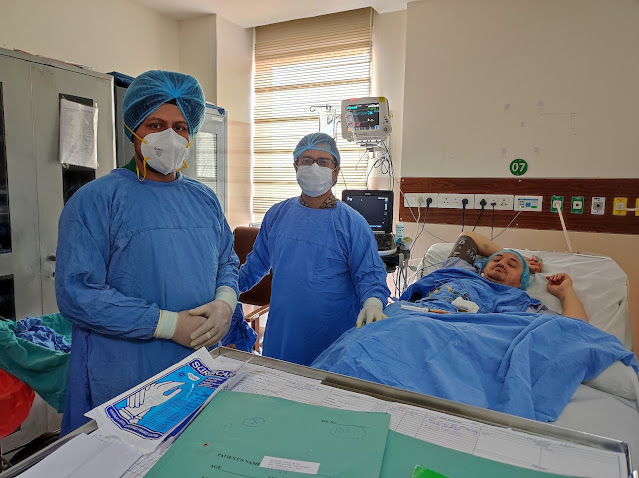Coiling Or Clipping In Brain Aneurysms
The coil causes aneurysm thrombosis and is left in the aneurysm indefinitely. Surgical clipping needs open surgery and is performed under general anesthesia. To visualize the aneurysm, the brain is slowly retracted. To stop blood flow into the aneurysm, a tiny clip is inserted across its neck. A small metal clip is used to halt blood flow into the aneurysm during microsurgical clipping. To reach the aneurysm in the brain, a craniotomy is performed to make an opening in the skull. The clip is placed on the aneurysm's neck (opening) to impede blood flow, and it stays inside the brain. The clip functions similarly to a miniature coil-spring clothespin, with the blades remaining tightly closed until pressure is applied to open them. The titanium clips are permanently attached to the artery.
In terms of mortality, re-bleeding, and re-treatments, neurosurgical cutting produces better results. In terms of post-operative problems, good outcomes, and rehabilitation, endovascular coiling is a better surgical approach. A non-contrast cranial computed tomography (CT) scan is used to diagnose acute subarachnoid hemorrhage (SAH). The most frequent techniques for reducing the rate of re-bleeding following SAH are surgical clipping and endovascular coiling. A micro-catheter is introduced into the femoral artery via an initial catheter in endovascular coiling. The microcatheter tip has a platinum coil attached to it. An electrical current is utilized to detach the coil from the catheter once it reaches the lumen of the aneurysm. Ischemic (e.g., thrombo-embolic, spasm during treatment), hemorrhagic (e.g., aneurysm rupture), and technical (e.g., coil in the vessel and aortic dissection) complications are the three types of endovascular coiling complications.
Currently, there aren't enough meta-analyses available in the medical literature from the last five years that compare the risks and benefits of endovascular coiling with microsurgical clipping, to our knowledge. A subarachnoid hemorrhage is a potentially fatal illness that affects roughly 1 in 10,000 people each year. There is rising concern about which of the two therapy methods, endovascular coiling (EVC) or neurosurgery clipping (NSC), provides the best clinical results for patients. As a result, this study was carried out to discover a relatively superior strategy for treating SAH.
A small metal clip is used to halt blood flow into the aneurysm during microsurgical clipping. To reach the aneurysm in the brain, a craniotomy is performed to make an opening in the skull. The clip is placed on the aneurysm's neck (opening) to impede blood flow, and it stays inside the brain. Intracranial aneurysms, also known as brain aneurysms, are abnormal dilatations of intracranial arteries that typically form at a branching point of the arteries. When faced with a choice between the two approaches, surgeons frequently express varying perspectives and conflicts.
The two main treatment options for cerebral aneurysms are surgical clipping and endovascular coiling; however, choosing between the two is far from simple and involves careful consideration for each individual patient. The goal of this review is to give a treating practitioner a better understanding of each of these treatment options, their efficacy, and the risk of complications, morbidity, and death, so that they may make better decisions.
The main benefit of surgical clipping is its long-term durability, which is a point of contention in endovascular coiling. Coiling showed a higher risk of rebleeding than clipping, according to a long-term study conducted by the intracranial subarachnoid aneurysm trial (ISAT). Computed tomography (CT) scanning, magnetic resonance imaging (MRI), and/or angiography were used to confirm the diagnoses. The treatment plan was chosen based on the conditions of the patients and the physician's interest. All of the patients were first assessed by a neurologist or a neurosurgeon, who determined whether the patient should be referred to an interventional radiology department for coiling or to a neurosurgeon for cutting.
Acute Stroke Mechanical Thrombectomy is best performed by Dr. Sandeep Sharma. He's a specialist at suction and stent retrieval, and he knows how to combine the two.




Thanks for sharing such an informative blog with us, Keep sharing with us. Want to know more about Endovascular Brain Surgery in Coimbatore visit the given link.
ReplyDelete